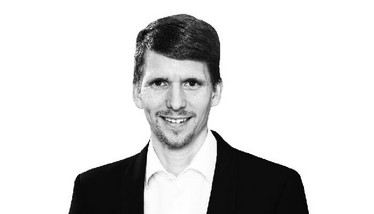Command and Control Your Bioprocess
The stem cell industry needs to embrace bioprocess control systems to develop consistent, high quality, and commercially viable bioprocesses.
Philipp Nold |

The challenge in stem cell bioprocessing – as in any industrial bioprocesses – is developing a commercially viable process that delivers products in high, consistent quality. It’s fair to say, however, that the protocols for stem cell expansion and differentiation are often significantly less mature than in biologics bioprocessing.
If we consider the medium composition, for example, cell-based therapy manufacturing requires xeno-free media to meet regulatory demands and allow process standardization. It also requires growth factors or chemical substitutes for them – at an affordable price. Another challenge is keeping commercial-scale manufacturing in mind during early-stage process development. David Courtman from the Ontario Institute for Regenerative Medicine hit the nail on the head when he said, “If I make a drug, it’s a chemically defined product and I know exactly what it is. […] In contrast, cell therapy products are really only defined by their process because the product can never fully be characterized. So the better you are at defining your process, the better you are at getting a standardized product and meeting regulatory approval” (1). Courtman’s words underline the importance of comprehensively understanding
your process.
Understanding can be broken down into a number of parameters – for example, medium pH, oxygen tension, physical forces, growth substrate, and concentrations of nutrients and metabolites – and their impact on cell growth and fate. The good news is that cultivation in bioreactors opens up new possibilities for process monitoring and control compared with conventional cell culture flasks. In bioreactors, you can easily control dissolved oxygen (DO) concentration, for example, and achieve conditions resembling those of the stem cell niche in vivo.
Other difficulties can arise from the sheer number of experimental conditions to be tested. Parallel mini bioreactor systems can be of help, as they reduce the number of process runs needed, while saving precious resources like media and supplements. Another challenge is sensor technology; measuring certain parameters online, such as pH and dissolved oxygen, is well established, but analyzing additional parameters that tell us more about nutrient and metabolite concentration or the cells’ state are not yet routine. Flexible bioprocess control software that allows integration of external sensors can greatly help here.
The most important factor is understanding which parameters have the greatest influence on the results, how they play together, and what the optimal setpoints are. In traditional experimental approaches one factor is changed per experiment, but this does not deliver information on interdependencies between variables. A Design of Experiments (DoE) approach involves simultaneously changing several factors. DoE allows a wider range of parameters to be covered, unravels interdependencies, and gives hints for meaningful follow-up experiments. A great advantage of a DoE approach is that only the experiments that are really needed are done, and so resources are saved. Multivariate analysis (MVA) is a statistical technique used to analyze data that arises from more than one variable, which helps to maximize the amount of information gleaned from the available data. DoE is a useful complement to multivariate data analysis, as it generates data tables that contain an important amount of structured variation.
Another technology that may play a significant role in cell therapy bioprocessing is perfusion technology. This is a hot topic today in protein production as it can deliver more product for a given bioreactor volume and therefore can save lab space and enhance flexibility. Plus, product quality profits through a more constant cellular environment and product harvest. Kropp and coworkers demonstrated the potential of perfusion technology for the cultivation of human induced pluripotent stem cells (2). The authors compared the expansion of cell-only aggregates when using different feeding strategies; and, in perfusion mode, glucose and lactate levels, pH, and DO were much more homogenous throughout the cultivation period, compared with a conventional repeated batch process. Importantly, the cell yield was almost 50 percent higher. I believe that gaining more cells in shorter time will help in translating the process for successful therapeutic applications. One can also imagine that perfusion processes are suitable for smooth transitions of media; for example to change growth factor concentrations in the course of cell expansion and differentiation.
Overall, successful stem cell bioprocess development needs comprehensive process understanding, which in turn requires bioprocess control systems that allow for process monitoring and control. Advanced methods for experimental design and data analysis, like DoE and MVA, can also help to gather important data and transform them into actionable insights.
The protocols for stem cell bioprocessing may be behind other fields, but the technology available today will make a big difference.
- Expression, “A short guide to cell therapy manufacturing, part 2”, (2018). Available at: bit.ly/2DXCn6T.
- Kropp et al., “Impact of Feeding Strategies on the Scalable Expansion of Human Pluripotent Stem Cells in Single-Use Stirred Tank Bioreactors”, Stem Cells Transl Med, 5, 1289–1301 (2016). PMID: 27369897.
Philipp Nold is Infield Application Specialist at Eppendorf AG Bioprocess Center.



















